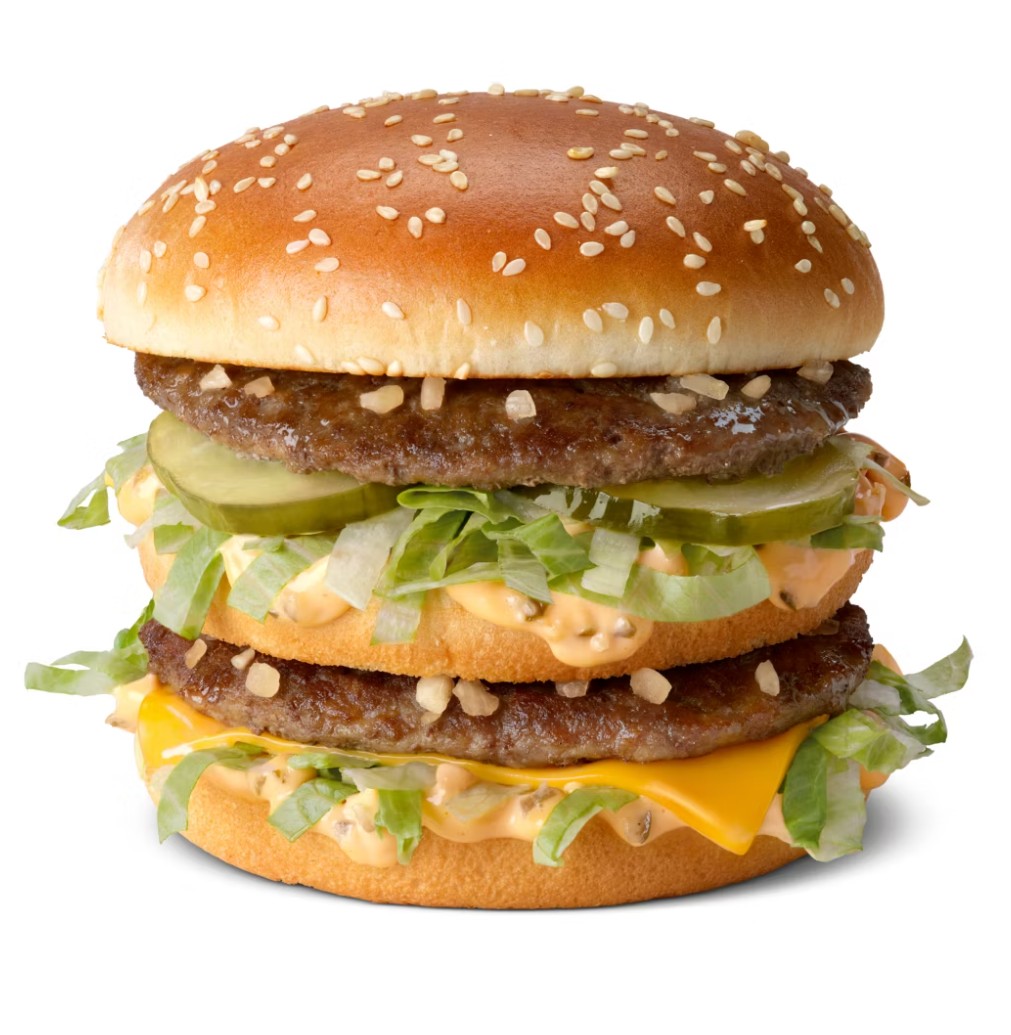
Le Big Mac, or the Big Mac for 580 calories!
McDonald’s Corporation (NYSE: MCD) is supposed to be one of the ultimate stocks for investors. It grows in good times, and it acts like a defensive stock in bad times. After all, people have to eat. McDonald’s has historically been a very affordable option for consumers to feed a family. At least until endless wage hikes and inflation hit…
McDonald’s stock is up only about 3% so far in 2025. And even though it is still up 15% from a year ago, this stock really hasn’t moved anywhere since early 2023. The reality is that the effects of higher prices from inflation are not coming down, and the continued trends for GLP-1 weight loss medicines are just not going away. That’s horrible news for a stock like McDonalds — and for most of its competitors that have seen even worse stock performance.
Tuesday marked the third analyst downgrade in just three trading days. Oh, and did it need to be noted that McDonald’s stock valuation of nearly 25-times expected 2025 earnings is a premium to the market when it faces significant secular growth challenges in the United States and developed world?
The firm Redburn Atlantic was the latest to downgrade McDonald’s. The team led by Chris Luyckx downgraded it to Sell from Buy. It also slashed its target to $260 from $319 in the call.
Redburn Atlantic fears that new behavioral challenges pose a serious long-term threat, specifically pointing out a widespread adoption of GLP-1 drugs that are changing years and decades of poor eating habits. It means fewer hamburger patties, less bread, fewer French fries, fewer shakes and so on. McDonald’s is not the only fast-food chain feeling this, and food makers who make the bulk items for the restaurant chains are all feeling the pinch.
Redburn Atlantic’s big issue is that this relatively new trend of appetite suppressants represents an underappreciated longer-term threat. Another serious issue is that consumers are feeling pinched with “pricing fatigue” after years of menu inflation. McDonald’s was not shy about its price hikes, and even when food prices normalized their prices stayed high. And “value menu” items may have good margins but they don’t exactly represent strong per-ticket sales trends.
Morgan Stanley downgraded McDonald’s on Monday to Equal-Weight from Overweight and it trimmed its price target to $324 from $329 in the call. Morgan Stanley cited valuation in its call due to a large premium valuation while its long-standing defensive stock status may no longer hold true in the new world. The firm noted economic headwinds for lower-income consumers who eat there and that structural trends from GLP-1 weight loss drugs pose a long-term threat.
Last Friday brought a downgraded from Loop Capital. The firm cut its rating to Hold from Buy and cut its target to $315 from $346. The firm sees negative customer trends to new menu items, specifically pointing out negative feedback on its McCrispy chicken strips’ product appearance despite a superior taste profile. The rub here is not as much breading and the size makes it look smaller than previous chicken tenders McDonald’s has sold.
The Big Mac clocks in at 580 calories, and the World Famous Fries carton clocks in at 480 calories before adding any ketchup. Add in a sugary beverage or a milk shake and whomever is trying to lose weight may have just exceeded they daily caloric limit or target. Now add in that higher prices appear to be here to stay, as no chain does better for investors by cutting prices. And all those new weight-loss trends probably aren’t too great for expecting large McCafé Caramel Macchiato orders at 400 calories to represent a top-off for breakfast sandwiches.
Again, McDonalds is not alone in price fatigue and changing consumer habits. Lamb Weston Holdings Inc. (NYSE: LW) is the potato supplier of the world (including MCD) and its stock has been cut in half in less than two years — translation, way less fries being consumed. Jack in the Box, Inc. (NASDAQ: JACK) has lost three-quarters of its value in two years, and Wendy’s Co. (NASDAQ: WEN) has lost half its value in the last year.
Restaurant Brands International Inc. (NYSE: QSR) has been holding its own better than most, as having multiple brands like Tim Hortons, Burger King, Popeyes, and Firehouse Subs has given it more options. Even Starbucks Corporation (NASDAQ: SBUX) and the mighty Chipotle Mexican Grill (NYSE: CMG) have not been able to recapture their prior highs.
Could McDonald’s be entering into a secular bear market of its own? That might be a painful experience, even if it’s perhaps not as broad as a secular bear market across an entire stock market.
Other restaurant chains, feed distributors and suppliers alike are all facing the new trends and it makes it hard for superior performance to stand out. If America is truly going to stay on GLP-1 medicines and remain healthier than in prior years, it requires less in food portions and better food in general. And if prices stay high when consumers are feeling pinched, there is just one more reason to go to the grocery store and skip waiting in a line of cars or waiting at the register (or self-serve kiosk).
Categories: Investing